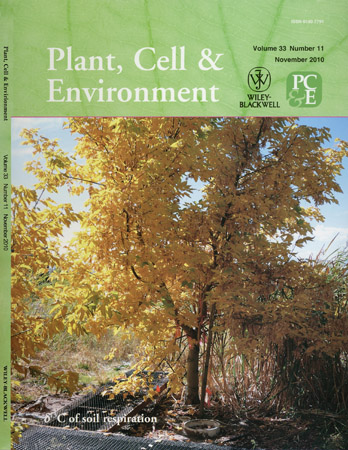
Biology Under Cover Abstract
Selected Journal & Book Covers from SBS Faculty
"Diffusive fractionation complicates isotopic partitioning of autotrophic and heterotrophic sources of soil respiration"
Moyes AB, Gaines S, Siegwolf RTW, Bowling DR
Commentary
Stable isotopes of carbon (C) are variations of the elementthat do not radioactively change (as radiocarbon does).These isotopes can be used toexamine biological, chemical, and physical processes associated with C cycling.In this study, we used C isotopes to examine production of carbon dioxide in the soil by the roots of box elder trees and by microorganisms that live in the soil.We found that the physical process of diffusion was important in interpreting results, something that had been ignored in earlier uses of these methods by biologists.This work highlighted the need to consider both physical and biological processes when examining daily and seasonal variation in soil carbon cycling
Abstract
Carbon isotope ratios (d13C) of heterotrophic and rhizospheric sources of soil respiration under deciduous trees were evaluated over two growing seasons. Fluxes and d13C of soil respiratory CO2 on trenched and untrenched plots were calculated from closed chambers, profiles of soil CO2mole fraction and d13C and continuous open chambers. d13Cof respired CO2 and bulk carbon were measured from excised leaves and roots and sieved soil cores. Large diel variations (>5‰) in d13C of soil respiration were observed when diel flux variability was large relative to average daily fluxes, independent of trenching. Soil gas transport modelling supported the conclusion that diel surface flux d13C variation was driven by non-steady state gas transport effects.Active roots were associated with high summertime soil respiration rates and around 1‰ enrichment in the daily average d13C of the soil surface CO2 flux. Seasonal d13C variability of about 4‰ (most enriched in summer) was observed on all plots and attributed to the heterotrophic CO2 source. Key-words: Acer negundo; carbon isotope; rhizosphere; roots; soil respiration; trenching.
